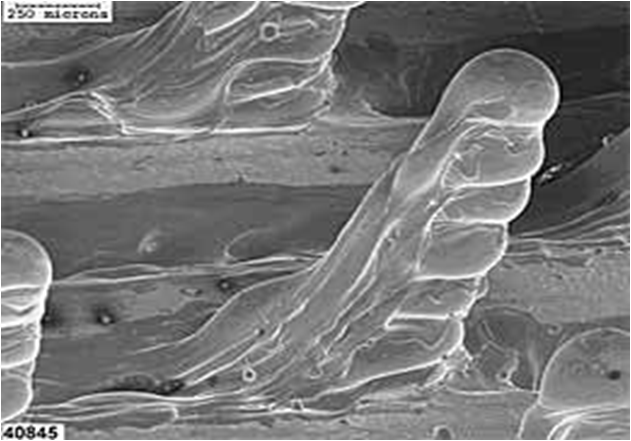Research
Comeld™ Joints: Optimisation of Geometric Parameters of the Protrusions (TWI Ltd and SEMS)
| Principal investigator: |

A novel surface treatment for metals developed at TWI, Surfi-Sculpt® leads to the formation of surface protrusions on metal surfaces. These protrusions are typically 1.0 mm high and 0.6 mm diameter. The surface modified metal can be bonded with composite laminates to form a Comeld™ joint. These joints can be described as a combination of mechanical fastening and adhesive bonding. There are many possible variables which could be applied to the metal surface. The variables include the shape, height, orientation and distribution (distribution pattern and density) of the protrusions.
The aim of this work was to optimise the protrusions with respect to their geometry and distribution using the finite element modelling method for the ComeldTM joint under tensile loading with titanium alloy and cross-ply carbon prepreg composites. The simulations require multi-scale modelling techniques to transfer results between the global model, which is the reflection of the whole joint, and the unit cell models containing a protrusion. The two-dimensional simulations focused on the protrusion geometric parameters whereas the three-dimensional simulations focused on the protrusion spatial arrangement including the distribution pattern and density. Modelling of the entire joint geometry with two and three-dimensional global models was carried out using smeared properties for the adhesive layer which includes the protrusions.

